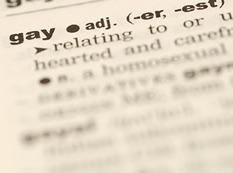Jan 31 2005
 In the first-ever study combing the entire human genome for genetic determinants of male sexual orientation, a University of Illinois at Chicago researcher has identified several areas that appear to influence whether a man is heterosexual or gay.
In the first-ever study combing the entire human genome for genetic determinants of male sexual orientation, a University of Illinois at Chicago researcher has identified several areas that appear to influence whether a man is heterosexual or gay.
The study, which is currently available online, will be published in the March issue of the biomedical journal Human Genetics.
UIC's Brian Mustanski, working with colleagues at the National Institutes of Health, found stretches of DNA that appeared to be linked to sexual orientation on three different chromosomes in the nucleus of cells of the human male.
"There is no one 'gay' gene," said Mustanski, a psychologist in the UIC department of psychiatry and lead author of the study. "Sexual orientation is a complex trait, so it's not surprising that we found several DNA regions involved in its expression."
"Our best guess is that multiple genes, potentially interacting with environmental influences, explain differences in sexual orientation."
The genomes of 456 men from 146 families with two or more gay brothers were analyzed.
While earlier studies had focused solely on the X chromosome, one of the two sex chromosomes, the present study examined all 22 pairs of non-sex chromosomes in addition to the X chromosome. The other sex chromosome, called Y, was not explored because it is not believed to contain many genes.
Identical stretches of DNA on three chromosomes -- chromosomes 7, 8 and 10 -- were found to be shared in about 60 percent of the gay brothers in the study, compared to about 50 percent expected by chance. The region on chromosome 10 correlated with sexual orientation only if it was inherited from the mother.
"Our study helps to establish that genes play an important role in determining whether a man is gay or heterosexual," said Mustanski. "The next steps will be to see if these findings can be confirmed and to identify the particular genes within these newly discovered chromosomal sequences that are linked to sexual orientation."
Other researchers involved in the study were Dean Hamer, at the National Institutes of Health; Nicholas Schork and Caroline Nievergelt, at the University of California at San Diego; Michael DuPree, at Pennsylvania State University; and Sven Bocklandt, at the University of California at Los Angeles.
The study was supported in part by grants from the National Science Foundation and the National Institutes of Health.
UIC ranks among the nation's top 50 universities in federal research funding and is Chicago's largest university with 25,000 students, 12,000 faculty and staff, 15 colleges and the state's major public medical center. A hallmark of the campus is the Great Cities Commitment, through which UIC faculty, students and staff engage with community, corporate, foundation and government partners in hundreds of programs to improve the quality of life in metropolitan areas around the world.
http://www.uic.edu